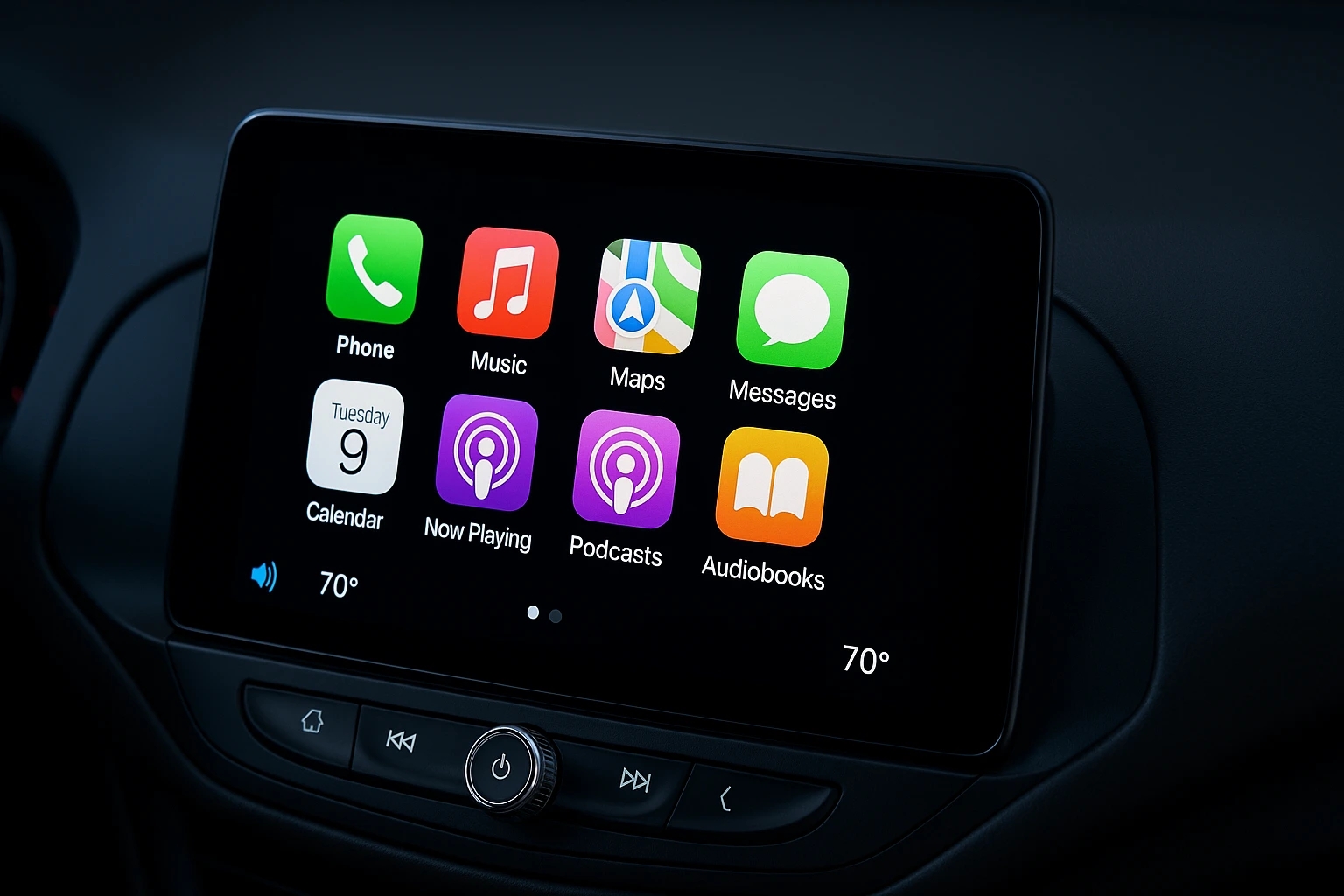Apple’s iOS 26 update is not just about new wallpapers or minor tweaks on the iPhone—it represents one of the most significant leaps in the evolution of Apple CarPlay, redefining the way drivers interact with their cars. With a growing demand for seamless smartphone integration, CarPlay has become an essential feature for millions of drivers, and Apple’s latest update pushes the platform toward becoming a full-fledged automotive operating system.
The standout addition is the integration of Live Activities directly into CarPlay. This feature, which debuted on the iPhone with Dynamic Island, now allows drivers to monitor real-time updates such as sports scores, ride-sharing ETAs, delivery progress, or flight statuses without ever needing to check their phone. This level of integration not only adds convenience but also improves safety by reducing the temptation to glance away from the road (TechRadar).
Visually, CarPlay receives its biggest design overhaul in years. The new “Liquid Glass” interface introduces a more fluid and transparent look that blends seamlessly with the car’s dashboard. Users can now choose between Light, Dark, and Clear modes, offering greater customization and comfort in different driving conditions (Tom’s Guide). Combined with the smooth animations and minimalistic design Apple is known for, this update positions CarPlay as not just a functional tool but also an aesthetic enhancement for modern vehicles.
Messaging and calling have also been redesigned to minimize distraction. The addition of Tapback support lets users reply to messages with quick emoji reactions, while incoming calls now appear in a compact banner style, rather than taking over the entire screen. This keeps the driver informed but not overwhelmed, reinforcing Apple’s focus on safe digital interaction in the car (PopSci).
Another powerful upgrade is Smart Display Zoom, designed to optimize CarPlay for ultrawide and custom-shaped infotainment screens. With more cars adopting panoramic dashboards and unconventional layouts, this feature automatically adapts the interface to ensure important information like navigation, speed, and notifications remain accessible and well-balanced on any display (El País).
Perhaps the most exciting update for many drivers is the introduction of AirPlay video streaming. For the first time, users will be able to play video content directly on their vehicle’s screen when the car is parked. This opens the door to watching Apple TV+, YouTube, and other streaming services during charging stops or while waiting in the car. Naturally, video playback is disabled once the vehicle is in motion, ensuring safety standards are respected (The Verge).
From a broader perspective, these updates reflect Apple’s growing ambition to position CarPlay as the dominant in-car digital platform. With nearly every major automaker offering CarPlay integration, its role is no longer secondary—it is increasingly becoming the default driving interface for millions of users. Some automakers have resisted this trend, fearing they may lose control of the user experience and valuable customer data. Tesla, for instance, has famously refused to support CarPlay. Yet consumer demand tells a different story: surveys show that for many buyers, CarPlay (and Android Auto) are now decisive features when choosing a car.
The evolution of CarPlay also ties into the larger transformation of the automotive industry, where cars are increasingly seen as rolling computers. With the rise of electric vehicles and autonomous driving, the in-car digital environment is no longer just an accessory but a central component of the driving experience. Apple’s ability to unify hardware and software ecosystems gives it a unique advantage in this transition. A driver who uses an iPhone, Apple Watch, and AirPods can now extend that ecosystem into their vehicle, maintaining continuity across all aspects of daily life (Apple Newsroom).
Looking ahead, the implications go beyond convenience. If Apple continues to develop CarPlay into a comprehensive car OS, it could open opportunities for subscription services, in-car apps, and new revenue models—similar to what Apple achieved with the App Store. This potential will likely intensify the debate between automakers and tech companies over who controls the future of in-car software.
In conclusion, the CarPlay updates in iOS 26 mark a turning point. With Live Activities, Liquid Glass, Tapback messaging, Smart Display Zoom, and AirPlay video streaming, CarPlay has grown from a handy smartphone extension into a complete digital cockpit. It not only makes driving safer and more intuitive but also shows us a glimpse of how Apple envisions the future of mobility: a seamless integration of devices, services, and experiences, all centered around the driver.
👉 For more deep dives into connected cars and smart mobility, check our Technology section.
👉 To stay updated with the latest software rollouts, head to News.
